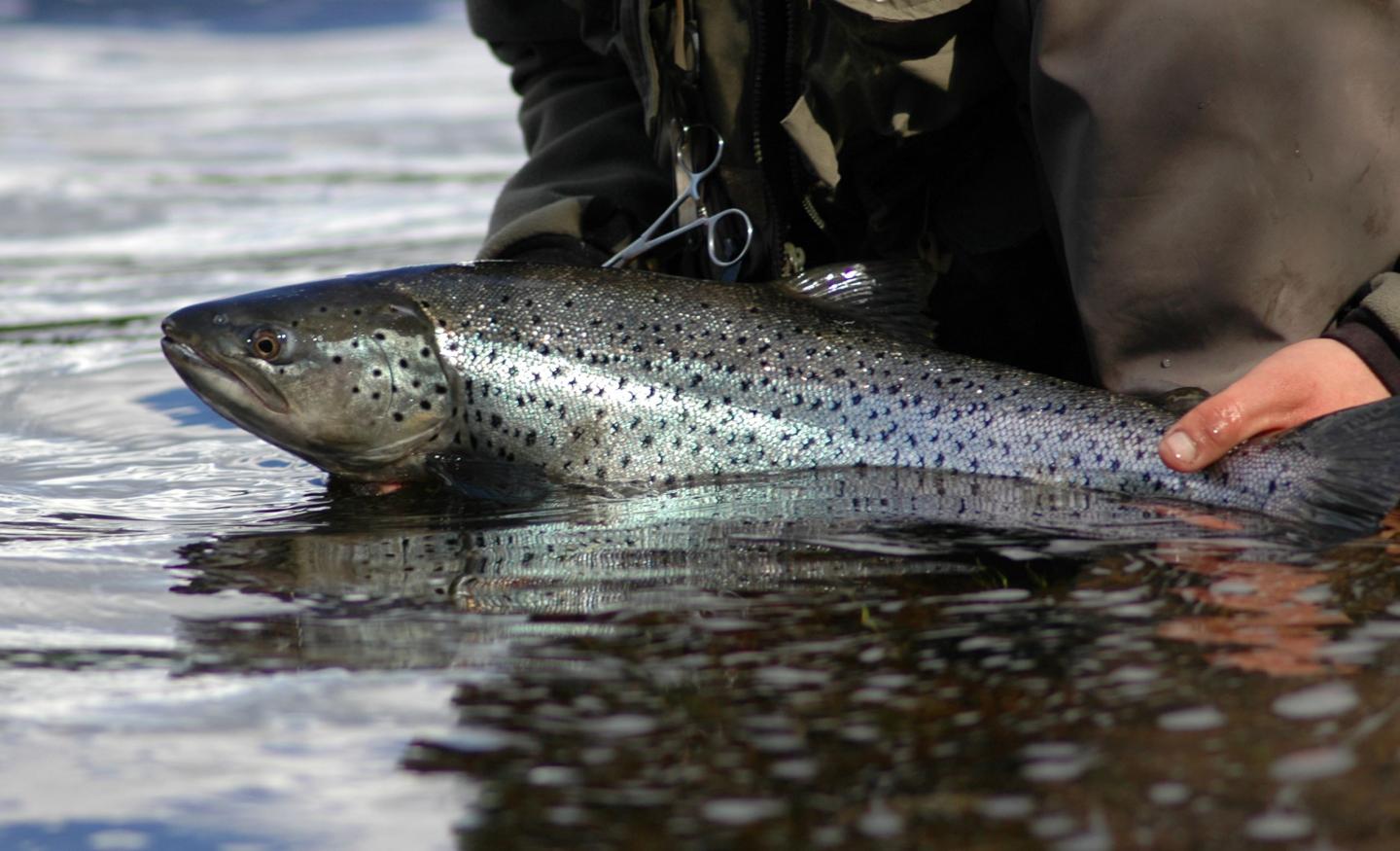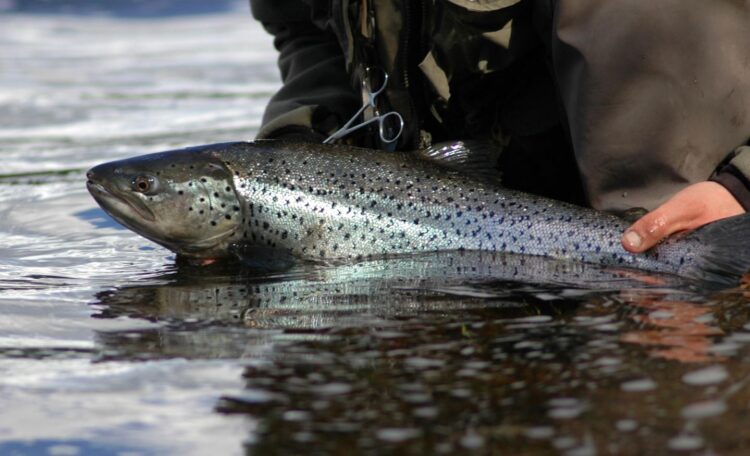
Credit: Pekka Hyvärinen, The Natural Resources Institute Finland
Collaborate research of the University of Jyvaskyla and the Natural Resources Institute Finland on salmonid fishes, sheds light on animal defence mechanisms and their interactions. The research demonstrates that populations with a strong physiological resistance show little behavioural avoidance and damage repair, and vice versa. The results can have important practical implications for stocking activities of endangered salmonids. The study was published in Proceedings of the Royal Society B in April 2020.
Animals can use a set of different defence mechanisms to combat infections. There are three main routes of defence that can be jointly used: behaviours that reduce exposure (such as the currently practised social distancing in humans), physiological resistance (immune system) that attacks the pathogen, and mechanisms that repair tissue damages of infection (tolerance).
“We studied populations of Atlantic salmon and sea trout from different rivers in Finland and found that those with a strong physiological resistance against an eye parasite, showed little behavioural avoidance and damage repair, and vice versa. This suggests that each defence type comes with costs for the host and that fish have to balance between these defence mechanisms” says researcher Ines Klemme from the University of Jyväskylä.
“It seems that different salmonid populations have evolved different optima of defence, likely matching the infection pressure in their own natural environment”, says Klemme.
“It is important to release fish stocks to their original habitats”
The present investigation provides information of the overall level of defence and interactions between individual mechanisms. Previous studies have commonly focused on one mechanism at a time.
Repairing tissues, i.e. tolerance, does not harm the parasite itself, but avoidance and immune defence negatively affect parasite reproduction and induce counteractions that lead to the evolutionary arms races.
The results have important practical implications for artificial selection and stocking programmes.
“The results suggest that artificial selection, for example to increase immunological defences, can lead to reduction in other defence mechanisms. It is also important for aquaculture stocking programs, which are used to support threatened salmonid populations, to release fish stocks to their original populations and habitats to which they may be adapted to”, says senior lecturer Anssi Karvonen from the University of Jyväskylä.
###
Link to the article in Proceedings of the Royal Society B: https:/
For further information:
Ines Klemme, University of Jyväskylä, [email protected], tel. +358 50 3420599
Anssi Karvonen, University of Jyväskylä, [email protected], tel. +358 40 8053882
Pekka Hyvärinen, Natural Resources Institute Finland, [email protected], tel. +358 295327641
Communications officer Tanja Heikkinen, [email protected], tel. 358 50 581 8351
The Faculty of Mathematics and Science:
https:/
FB: jyuscience Twitter: jyscience
Media Contact
Dr. Anssi Karvonen
[email protected]
Original Source
https:/
Related Journal Article
http://dx.





